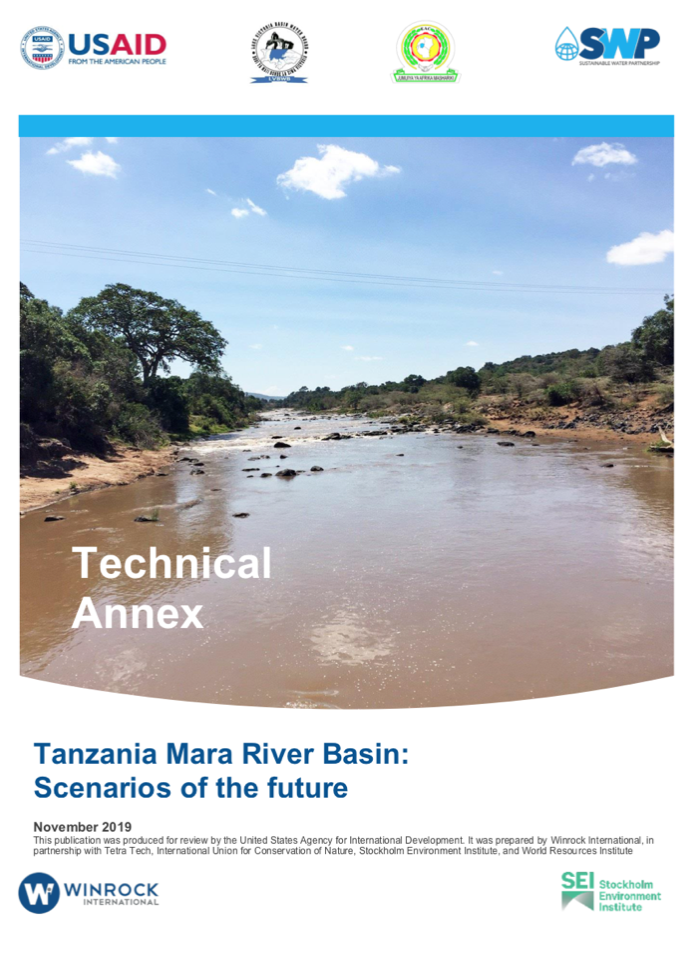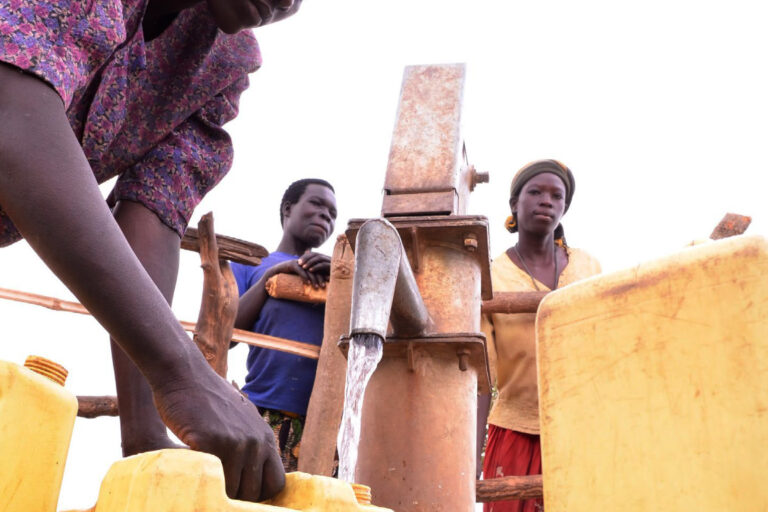
SWP Publishes Five Studies To Support Evidence-Based Decision-Making in the Mara River Basin
The studies are the foundation for a water allocation plan in Tanzania
As demand for water continues to grow and climate change makes water availability less predictable, water security is an increasing challenge around the world. While many countries would like to adapt their water management strategies to respond to this challenge, a common hurdle is a lack of reliable data to support evidence-based decision-making. This problem is particularly true of transboundary water resources that are shared by two or more countries.
One such at-risk water resource is the Mara River Basin, shared by Kenya and Tanzania. The river basin, which supports some 1.2 million people and world-famous wildlife preserves, is threatened by factors such as population growth, deforestation, and climate change and variability.

To confront this challenge, the USAID-funded Sustainable Water Partnership, implemented by Winrock International, has been working since 2018 to provide decision support systems in the Lower Mara River Basin. Together with Tetra Tech and research partners at the Stockholm Environment Institute (SEI), the IHE-Delft Institute for Water Education and mWater, SWP recently published a series of studies that assess past and present water demand, water availability and water use in the basin, as well as evidence-based projections for the future.
Completed under field leadership of SWP’s Sustainable Water for the Mara (SWM) activity, the studies served as the basis for a water allocation plan for Tanzania’s portion of the river basin. The eventual goal in the region is to facilitate a harmonized transboundary water allocation plan between Kenya and Tanzania to jointly manage the Mara. The WAP for the lower Mara River basin in Tanzania will significantly contribute to a potential transboundary water allocation plan between Kenya and Tanzania.
For more information, view summaries and links to each study below.
Lower Mara River Basin Water Availability Assessment
This technical report describes the analytical procedures and results of a water availability assessment for the Mara River Basin using long-term historical precipitation and discharge data. The objectives of this assessment were: 1) to regionalize average monthly and average annual discharge data, 2) estimate flow duration curves, 3) set up long-term water balances for the sub-catchments within the Mara River Basin, and 4) assess changes in the hydro-meteorological time series data sets.
Lower Mara River Basin Water Demand Assessment
This water demand assessment presents the outcomes of analyses to estimate current and future water demands for human and economic activities in the Tanzanian portion of the Mara River Basin over the next 5, 10 and 20 years. The water demand assessment findings were combined with the water resource availability assessment to calculate the water balance in the basin.
Lower Mara River Basin Water Abstraction Survey Report
This report describes the findings of a field survey in the Mara River Basin in Tanzania to estimate current use, including locations, source types, approximate amounts abstracted, and purposes for the water abstractions. Information from the abstraction survey was combined with data presented separately on water resource availability, future demand projections, and the reserve to calculate the water balance to be included in a future Mara-wide water allocation plan.
Lower Mara River Basin Future Scenarios
Together with SWP, SEI facilitated robust decision support (RDS) workshops with stakeholders. Through the workshops, stakeholders identified and discussed different uncertainties, such as climate change, land use and demographics changes confronting the basin. This report details potential future scenarios identified by local Mara River Basin stakeholders through this process.
The Water Evaluation and Planning (WEAP) system model of the Mara River Basin was developed as a collaborative effort between SWP, SEI, and IHE Delft. Informed by the water abstraction, demand, and availability assessments along with the stakeholder RDS workshops, the historical and baseline conditions are representative of researchers’ best understanding of the basin as it has existed and been used historically, as it exists and is used today, and how it will exist and be used into the future, without any major changes.
Related Projects

